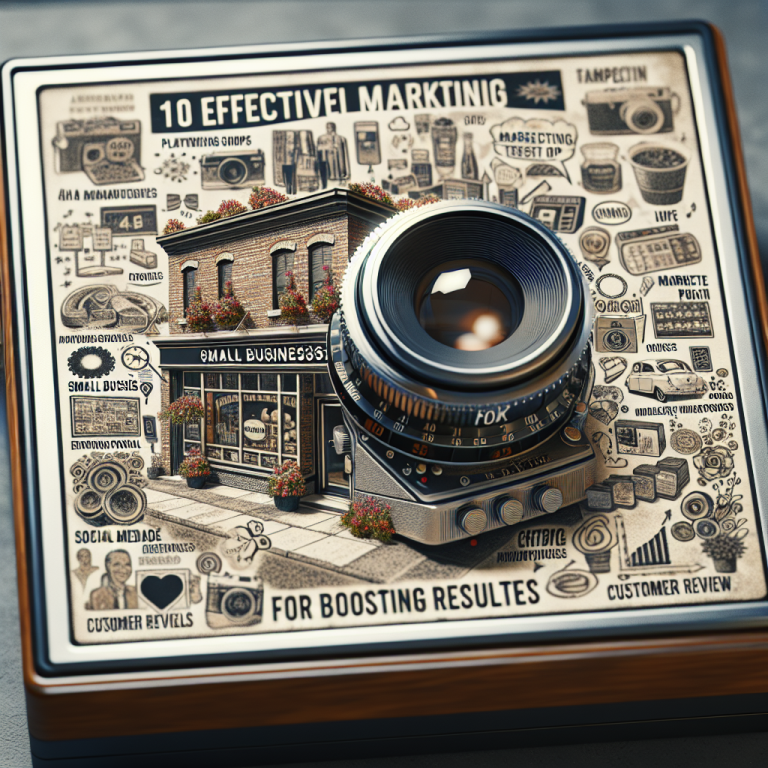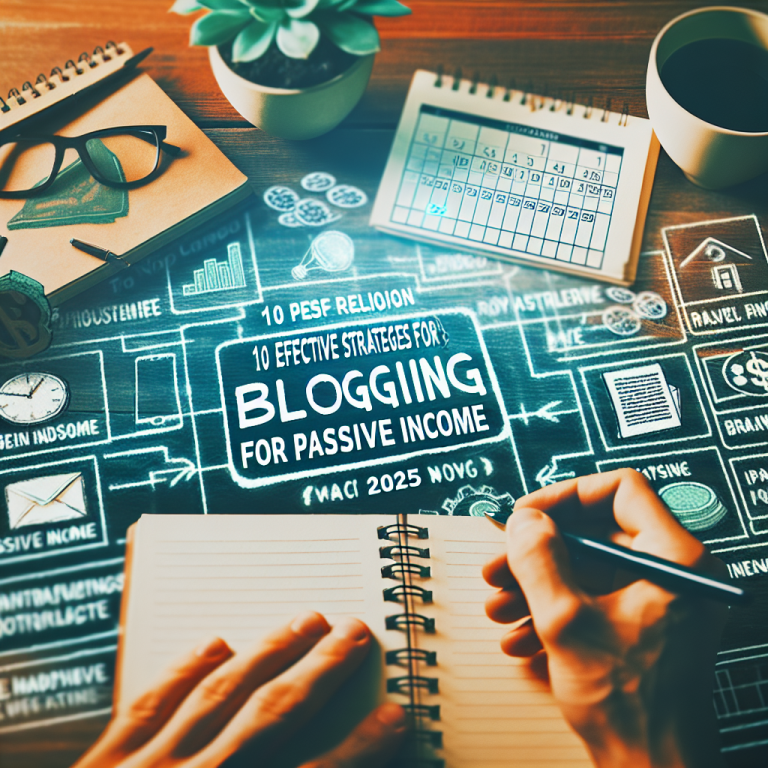The Ultimate Guide to Persuasive Storytelling for Brands in 2025: 5 Effective Strategies
Table of Contents
- 1. Understanding Your Audience in 2025
- 2. Crafting Authentic Brand Narratives
- 3. Leveraging New Technologies for Storytelling
- 4. Incorporating Emotional Connection Techniques
- 5. Measuring the Impact of Persuasive Storytelling
1. Understanding Your Audience in 2025
Deep Data Analytics for Audience Insights
Knowing your audience is the cornerstone of persuasive storytelling for brands. In 2025, leveraging advanced data analytics tools enables brands to gain a granular understanding of customer preferences, behaviors, and values. These insights help craft stories that resonate on a personal level. For example, using AI-driven analytics, a brand can identify trending topics and emotional triggers, ensuring content aligns with what audiences genuinely care about.
By integrating real-time data, companies can adapt their narratives quickly, staying relevant in a fast-changing landscape. According to recent research, personalized content based on detailed analytics increases engagement by up to 70%. This underscores the importance of understanding your audienceâs evolving needs for effective storytelling.
Actionable tip: Use tools like customer journey mapping and sentiment analysis to refine your brand stories continually. Remember, in 2025, your storytelling success rides on your ability to interpret data accurately.
Segmenting Audiences for Better Engagement
Segmentation allows brands to tailor their stories to specific groups, making the message more compelling. In 2025, segmentation strategies have become more sophisticated with AI-powered tools that categorize audiences based on behavior, demographics, and psychographics. For instance, a fitness brand might segment audiences into casual exercisers and professional athletes, creating narratives suited to each group.
Effective segmentation ensures your story is relevant and impactful, fostering stronger emotional connections. Studies show that targeted storytelling increases conversion rates significantly, often by over 50%. Plus, customized stories improve brand loyalty by making customers feel understood and valued.
Practical tip: Regularly update your segmentation criteria to reflect changing audience dynamics, and craft stories that speak directly to each group’s unique motivations and challenges.
2. Crafting Authentic Brand Narratives
The Power of Genuine Storytelling
Authenticity remains the king in persuasive storytelling for brands in 2025. Consumers increasingly seek genuine stories that reflect your brandâs core values, mission, and real-world impact. A brand that shares its authentic journey builds trust and loyalty, which are crucial for long-term success.
For example, Patagoniaâs storytelling highlighting its environmental activism has solidified its reputation as an authentic brand committed to sustainability. Such stories inspire customers and motivate them to support your brand’s cause, turning them into advocates.
Tip: Share behind-the-scenes stories, founder narratives, and customer success stories to enhance authenticity. Avoid overly promotional content â focus on honesty and transparency instead.
Aligning Stories with Brand Values
Every compelling story should reflect your brandâs core values. When your narrative aligns with what your brand stands for, it creates consistency and reinforces your positioning. In 2025, consumers are especially attentive to brands that act ethically and stand for social causes.
A practical example is Ben & Jerryâs consistent storytelling about activism and social responsibility, reinforcing their brand identity. This alignment results in stronger customer loyalty and brand affinity.
Actionable tip: Define your brandâs values clearly and develop storytelling themes around them. Make sure every piece of content underscores these core principles.
3. Leveraging New Technologies for Storytelling
Embracing Augmented Reality (AR) and Virtual Reality (VR)
Innovative technologies like AR and VR are transforming storytelling in 2025. These immersive experiences allow brands to engage customers in memorable ways, creating interactive narratives that go beyond traditional content. For example, a furniture brand might offer a VR tour of a virtual showroom, helping customers visualize products in their homes.
Research shows that immersive content increases engagement and retention rates significantly. It also provides a competitive advantage as consumers increasingly seek experiential content.
Practical tip: Invest in AR/VR tools to craft interactive stories that allow your audience to explore your brandâs universe firsthand. Itâs a game-changer in persuasive storytelling for brands.
Utilizing AI-Generated Content
AI technology now enables brands to produce personalized stories efficiently at scale. With AI-driven content creation tools, you can generate tailored narratives that resonate uniquely with each customer segment. For instance, personalized videos, emails, and social media posts crafted by AI can significantly boost engagement.
Moreover, AI analytics can suggest story elements based on user preferences, ensuring that your storytelling aligns with audience expectations. According to Forbes, AI-enhanced storytelling can improve marketing ROI by up to 30%.
Actionable tip: experiment with AI-powered storytelling platforms to create dynamic, personalized content that captivates your audience and drives conversions.
4. Incorporating Emotional Connection Techniques
Storytelling That Evokes Empathy and Inspiration
Emotion drives action. In 2025, successful persuasive storytelling for brands taps into deep emotional triggers like empathy, hope, and pride. Stories that evoke these feelings foster a sense of connection, motivating audiences to engage and share.
For example, campaigns that feature real customer stories or highlight social impact create emotional bonds that strengthen brand loyalty. Emotional storytelling can boost consumer advocacy, as people tend to share stories that resonate emotionally.
Practical tip: Use authentic testimonials and impactful visuals to evoke emotions, ensuring your stories connect deeply with your audienceâs values and aspirations.
Using Storytelling to Drive Social Impact
A compelling way to incorporate emotional connection is through social impact stories. In 2025, consumers prefer brands committed to making a positive difference. Sharing stories about community initiatives or environmental efforts reinforces your brandâs purpose and builds an emotional bridge with your audience.
Brands like TOMS have thrived by sharing stories of how their purchases help others, creating a ripple effect of goodwill. Such stories inspire consumers to act, turning emotional engagement into tangible results.
Tip: Highlight your social impact stories across multiple channels and ensure theyâre authentic and transparent.
5. Measuring the Impact of Persuasive Storytelling
Using Data-Driven Metrics
In 2025, measuring the effectiveness of your storytelling efforts is more sophisticated than ever. Beyond likes and shares, brands use advanced analytics to assess engagement, emotional response, and conversion rates. Metrics like time spent on content, sentiment analysis, and customer feedback provide a comprehensive picture of storytelling impact.
For example, tools like biometric feedback and AI sentiment analysis help brands understand emotional resonance in real-time, allowing for quick adjustments. This data-driven approach ensures your stories are not only engaging but also effective.
Actionable tip: Establish clear KPIs aligned with your storytelling goals, and regularly analyze data to optimize your narratives for maximum impact.
Monitoring Brand Sentiment and Loyalty
Sentiment analysis tools help gauge how your stories influence overall brand perception. Maintaining a positive sentiment is crucial for building loyalty and advocacy. In 2025, brands that monitor online conversations can identify emerging issues and opportunities quickly.
Utilize social listening tools to track mentions, comments, and reviews. Addressing negative feedback promptly and amplifying positive stories can significantly enhance your brand reputation.
Tip: Regularly review your storytelling campaigns’ performance and refine your strategies based on insights to continually improve your persuasive storytelling for brands.
Conclusion
Persuasive storytelling for brands is more vital than ever in 2025. It helps forge genuine connections, build loyalty, and differentiate your brand in a crowded marketplace. From understanding your audience to leveraging emerging technologies and measuring impact, each strategy contributes to crafting compelling narratives that resonate. Remember, the key to success lies in authenticity, emotional depth, and continuous adaptation. Embrace these five strategies to elevate your brandâs storytelling in 2025 and beyond.
Frequently Asked Questions
1. What is persuasive storytelling for brands?
Persuasive storytelling for brands involves crafting compelling narratives that influence audience perceptions and behaviors. It combines emotional appeal, authenticity, and data insights to engage consumers effectively.
2. How can technology enhance brand storytelling in 2025?
Technologies like AR, VR, and AI significantly enhance storytelling by creating immersive experiences, personalizing content, and providing valuable analytics. These tools make brand narratives more engaging and targeted.
3. Why is authenticity important in persuasive storytelling?
Authenticity fosters trust and loyalty. Consumers in 2025 look for genuine stories that reflect a brandâs true values and impact, which makes their emotional connections more meaningful and lasting.
4. How do you measure the success of your storytelling efforts?
You measure success through data-driven metrics such as engagement rates, sentiment analysis, conversion rates, and customer feedback. These insights help optimize future storytelling strategies.
5. Tips for creating emotional storytelling for brands in 2025?
Focus on genuine stories, use visuals and testimonials to evoke emotions, align narratives with your core values, and incorporate social impact themes. Regularly analyze feedback to improve effectiveness.








